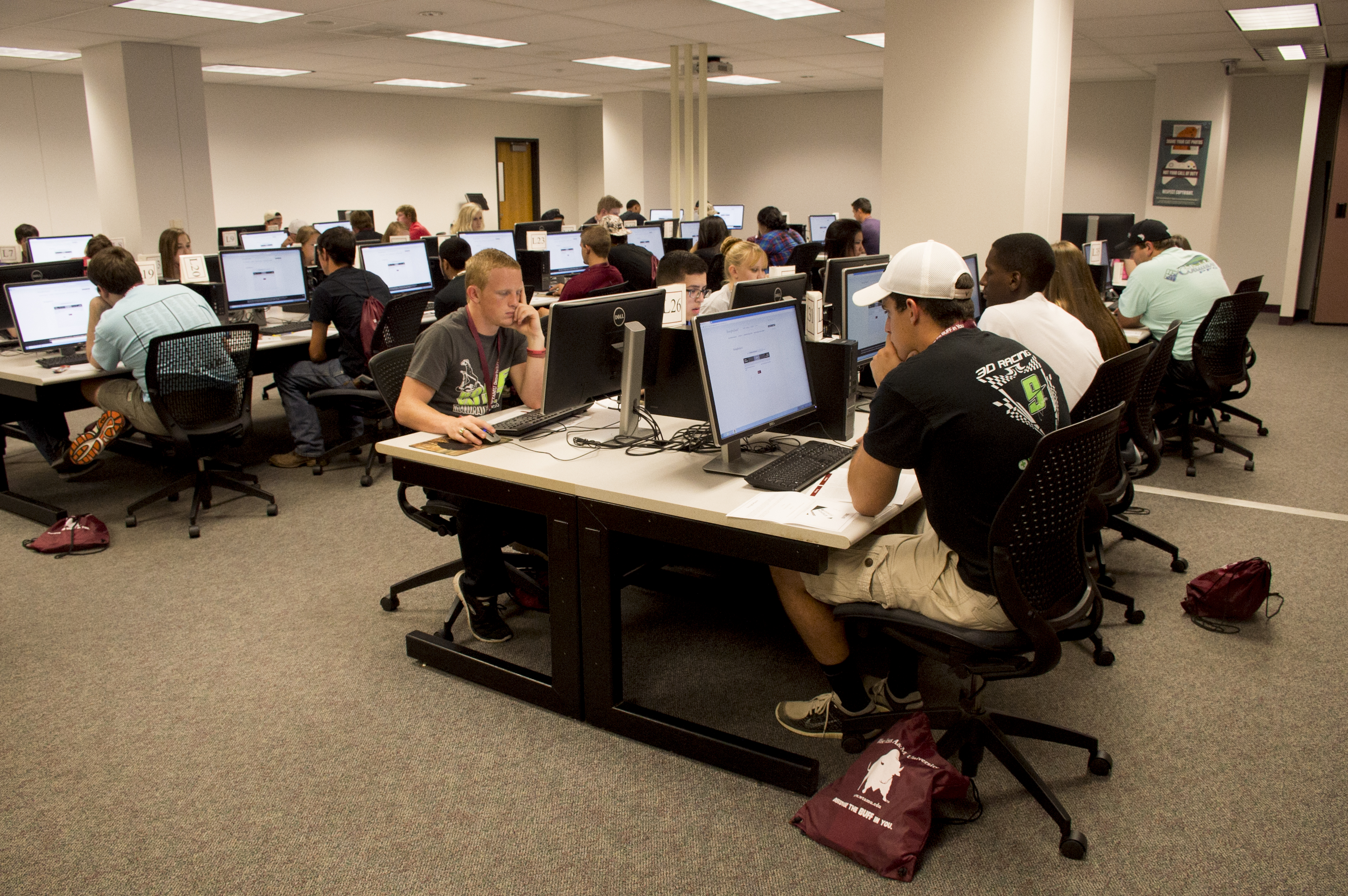- Featured
- Technology
- Education
Copy by Chip Chandler, 806-651-2124, cchandler@wtamu.edu
CANYON, Texas — When students begin online summer sessions at West Texas A&M University on June 1, they’ll benefit from an institution that has been a national leader in online education for more than two decades.
Though universities across the country had to make quick shifts to exclusively online classes in an effort to control the spread of COVID-19, WT made a smooth transition because the push into virtual classrooms began in 1997.
“WT students are not getting hastily developed online courses taught by first-timers,” said Dr. Neil Terry, provost and executive vice president. “WT online degrees are solid investments, and the University has proven ready to serve online students at an affordable cost and with a high-quality education.”
When Fall 2020 classes begin, students will have the options to take courses online, face-to-face or a hybrid of both.
Among more than 1,200 online programs surveyed by U.S. News & World Report this year, WT’s online master’s degree in computer information technology programs ranked No. 8. The university’s online bachelor’s programs for veterans tied for No. 12, and its overall online bachelor’s programs tied for No. 16. Other ranked programs include online master’s in business programs for veterans (tied for No. 14), online master’s in business programs (tied for No. 29), online MBA programs for veterans (tied for No. 32) and online MBA programs overall (tied for No. 54).
Online education is present in all aspects of the University’s curriculum, though, not just in the realm of online-only degrees. The University’s connected campus provides a 21st-century framework that integrates online learning, video collaboration and lecture capture systems to support hybrid learning to enhance the overall learning experience for today’s generation of learners.
Distance education has long been a key initiative for WT, said James Webb, Vice President for Institutional Technology and Chief Information Officer.
The university built one of the first learning management systems in the world, Webb said. WT Online was built from the ground up in the late 1990s, and the architecture was solid enough to maintain operations for more than a decade. WT shifted to a virtual data center in 2008, consolidating and unifying multiple operating systems in one location.
According to a 2012 case study by Cisco, the data center makes WT a “pioneer,” with multiple servers capable of providing connections for more than 8,000 students and 1,200 faculty and staff.
“Instructional Technology Services has a team of talented and knowledgeable individuals who are available for one-on-one support of faculty teaching online courses at WT, as well as providing workshops and training materials for all the various aspects and tools used for teaching online,” said IT manager Lora Haasl. “These individuals have expertise and experience in instructional design, graphic design, video production and many other areas needed to support and develop outstanding online courses. A member of Instructional Technology Services staff is on call on weekends to support faculty and students with any emergency online course needs that may arise after hours.”
WT is a pioneer throughout the digital realm, though. It was the first university in the nation to deploy WiFi 6 in its new Buffalo Stadium, an NFL-grade solution offering digital fan experiences, streaming video, HD digital scoreboards and more. For about a decade, campus classrooms have operated as smart classrooms, with state-of-the-art technology and infrastructure. In 2012, the university was honored for its mobile application development and web accessibility by Computer World, alongside corporate leaders like Sprint, Intel, Boeing, Toyota and more.
The Department of Life, Earth and Environmental Sciences has pioneered portable environmental sensors to remotely monitor atmospheric conditions such as temperature, air pressure, relative humidity and partial concentrations. Similar technology is used at the University’s Nance Ranch to monitor the movement of cattle herds and make sure sickness isn’t present.
“We know that technology will continue to evolve and demand will continue to increase,” Webb said. “We will continue to harness the power of collaboration to understand our problems, then create solutions.”
— WTAMU —

